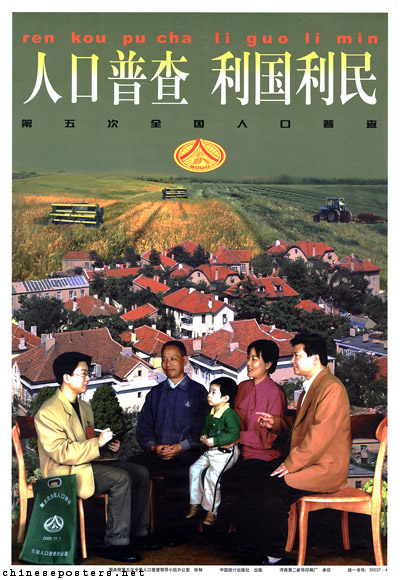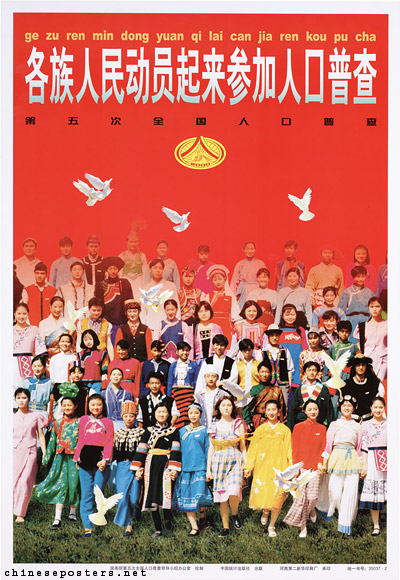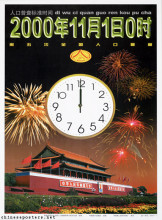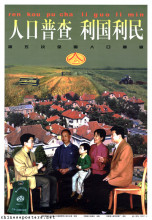The Fifth National Census, 1 November 2000, zero hour, 2000
On 1 November 2000, at 00:00 hours, work started for the Fifth National Census. More than ten million workers, including government officials, teachers and other volunteers, were mobilized for the project. In a period of ten days, these census workers visited the more than 350 million families in the country. In what was a first in Chinese census-taking, 90 percent of the families were questioned on the basis of a short-form questionnaire, whereas in the case of the other ten percent, long-form questionnaires were used.
Report things as they really are, do a good job in the national census, 2000
The census takers faced more problems than in earlier cases. As Kam Wing Chan indicates, "[I]nstead of the population obediently queuing up to be counted [...] an increasing but still small proportion of people probably reacted to the census in 2000 in a less cooperative way. They gave inaccurate anwers unintentionally or intentionally, or simply refused to answer some questions. Still others, like the ‘above-quota birth’ children or the homeless and itinerant commercial sex workers, were by nature hard for the census workers to locate" (p. 5).
The national census benefits the nation and the people, 2000
In the meantime, results of the census have become available. These include:
- Total population: 1.295 bn people (22% of total world population)
- Sex proportion: 116.9%
- The most populated administrative region: Henan Province (92.6 mn people)
- The least populated administrative region: Tibet (Xizang) Autonomous Region (2.6 mn people)
- The province with the fastest population increase since 1990: Guangdong Province (37.5% increase)
- Rural population: 64%. Urban population: 36%. The proportion of the urban population rose by almost 10% compared with the 1990 census
- University graduates per 100,000 people: 3.6 (1990: 1.4)
- Total number of military personnel: 2.5 mn
- Yearly average net increase of the population: 12.8 mn
- Average lifespan: Male - 69 years; Female - 73 years
- Percentage of those over 65 years: 6.96%
Mobilize the people of all nationalities to participate in the national census, 2000
An interesting development in the posters that were intended to explain various aspects of the census is that they were sponsored by companies such as China Life (aka the People’s Insurance Company of China, PICC). Although the State Council and other government organizations remained responsible for the overall publication process, it points to a trend where the party-state no longer necessarily functions as the main originator of such materials. The same applies to the posters published to support China’s candidacy for the Olympic Games in 2008.
Kam Wing Chan, "Chinese Census 2000: New Opportunities and Challenges", The China Review, vol. 3, no.2 (Fall 2003), pp. 1-12
National Bureau of Statistics of the People’s Republic of China, Communiqué on Major Figures of the 2000 Population Census (No. 1) 28 March 2002

















![Report census data truthfully, provide a realistic picture of the economy -- China Economic Census 2008 The Second [sic]](/sites/default/files/styles/medium/public/images/e37-140.jpg?itok=4t6d5Jcb)